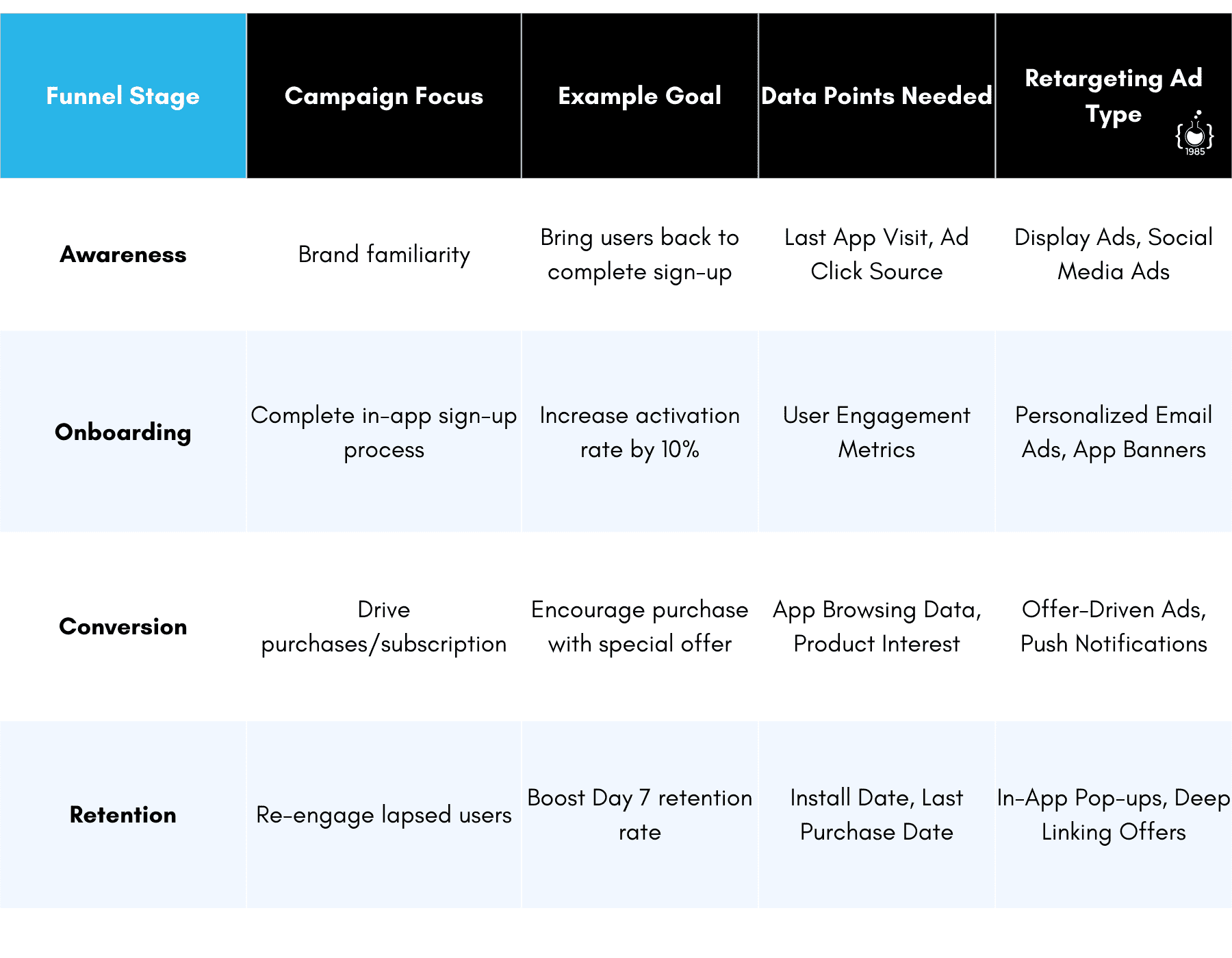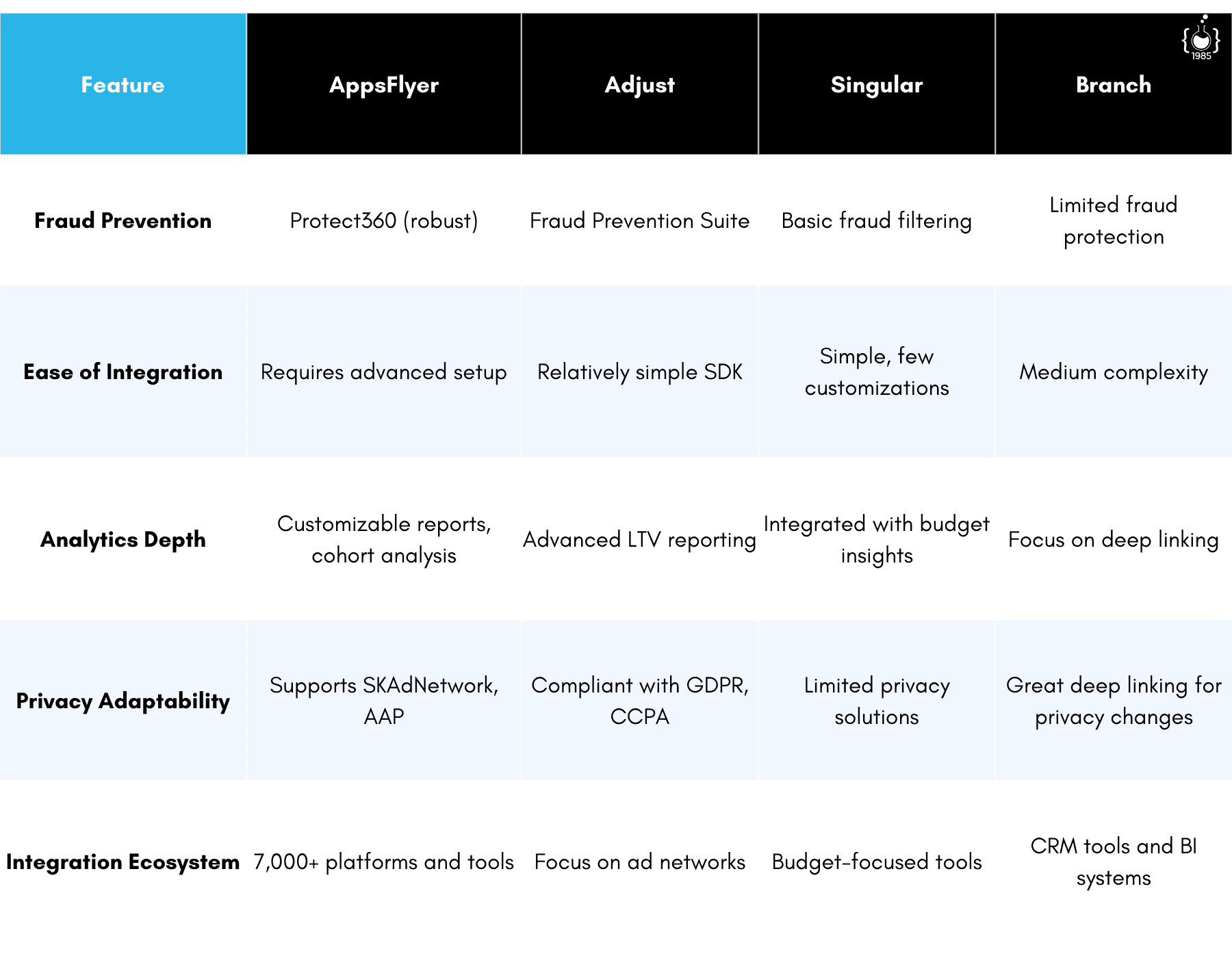Mobile Measurement Partner (MMP) Tools: Deep Dive into AppsFlyer
Want to stop wasting ad spend and understand what truly drives user installs? AppsFlyer might just be the tool you need.

Mobile marketing is almost like a huge, messy puzzle with way too many pieces. You've got ads running, users downloading, metrics piling up—but which pieces actually fit together? Which ones drive success? That’s where Mobile Measurement Partner (MMP) tools come in. They’re like having a map to make sense of the maze. Today, we're going deep on one of the best: AppsFlyer.
Hi, I’m Sharath. I run 1985, an outsourced software development company. Over the years, we've helped plenty of brands grow. We’ve been there, sifting through piles of data, figuring out which campaigns work and which don’t. We know how hard it can be. That’s why a tool like AppsFlyer isn’t just nice to have—it’s essential. It brings clarity. It shows you what’s working and what’s not, and helps you spend your marketing dollars in the smartest way possible.
In this post, I’m going to walk you through what makes AppsFlyer special. We’re going to look beyond the glossy one-pagers and see what’s really under the hood. If you've ever wondered why attribution is such a big deal, or if you’re struggling to connect the dots in your user data, keep reading. We're about to make it a whole lot clearer.

What is AppsFlyer, Really?
You already know AppsFlyer is an MMP, which essentially means it helps businesses understand their mobile app users’ journeys across multiple channels. But there’s more to it than that. Unlike a typical analytics tool that only gives you data, AppsFlyer is all about accurate attribution—deciphering exactly what led a user to download and engage with an app.
Think of AppsFlyer as a detective, tracing back every user's move to identify the proverbial smoking gun. The app? The ad network? The influencer campaign? AppsFlyer sifts through it all, ensuring you know precisely where each new user came from, and, more importantly, what exactly brought them in.

One of the most underrated strengths of AppsFlyer is its breadth of integrations. It integrates seamlessly with nearly every major ad network and data provider out there. This means no matter what you're using—Facebook, Google, TikTok, or some niche DSP—AppsFlyer fits right into your puzzle, giving you a 360-degree view of how different campaigns impact your app installs.
More importantly, it doesn't just tell you what happened. It gives you insight into why it happened and where you should put your money next. Understanding the why behind user actions is the game changer that separates a good MMP from a great one.

Why Does AppsFlyer Matter?
If you're in mobile, you know that the marketplace is crowded. There are millions of apps out there. How do you stand out? By knowing which marketing activities actually work. Without an MMP, you'd be essentially throwing darts in the dark—hoping for the best but never really knowing if it’s working.
Here's a real-world stat that paints a picture: According to a recent report from Singular, marketers waste almost $3 billion annually on ad fraud in mobile advertising. Let that sink in—billions, with a B. AppsFlyer provides advanced fraud protection tools to minimize this bleeding. Their "Protect360" solution, specifically, is a hidden gem. Most people think of it as just another part of AppsFlyer’s offering, but in reality, it's an incredible advantage that can save companies hundreds of thousands of dollars—if not more—in wasted spend.
In simpler terms, without an MMP, your budget—or at least a portion of it—is at risk of being spent on users that never existed. Bots. Click farms. This is where AppsFlyer truly shows its value.
Furthermore, AppsFlyer excels at privacy-focused measurement. In a world that’s quickly becoming hyper-aware of data rights and privacy (thanks, GDPR and iOS 14), AppsFlyer helps companies stay compliant while still being able to gather the data they need to make informed decisions. It’s all about striking a balance—ensuring you respect users' privacy while delivering results that move the needle.

A Deep Dive into AppsFlyer’s Core Features
1. Attribution Modeling:
Let’s talk about what makes AppsFlyer tick—attribution modeling. AppsFlyer offers both deterministic and probabilistic attribution. Deterministic attribution—typically involving click and install matching—provides highly accurate data based on unique identifiers. However, as privacy changes increasingly limit tracking, the industry has shifted towards probabilistic attribution, which relies on contextual data points like device type, OS, and location to estimate a user's journey. AppsFlyer offers a smart mix, adapting based on data availability.

If you’re a marketer juggling campaigns across several channels, understanding which type of attribution suits a particular platform or user segment is invaluable. For instance, deterministic attribution works best when there’s a direct install click-through—think Facebook ads or Google Search campaigns—where you can match a click to an install definitively. Probabilistic is crucial when this isn't possible, like some programmatic ad channels.
2. Retargeting and Deep Linking:
AppsFlyer isn’t just about bringing users in. It’s also about bringing them back. That’s where their retargeting and deep linking solutions shine.

With retargeting, you can set up specific campaigns to target users who may have dropped off at a certain funnel stage—people who downloaded your app but never signed up, for example. Retargeting on AppsFlyer gives you granular data that enables smarter segmentation. Not only do you know who left your app, but also why and when, so you can launch retargeting ads that actually speak to their pain points.

And then there’s deep linking—which has become a bit of a buzzword lately. Deep linking with AppsFlyer makes sure that when a user clicks an ad, they don’t just land on your home screen but instead arrive at a specific page in the app, like a product page or a special offer. The ability to deliver relevant user experiences is what keeps customers coming back, and AppsFlyer makes this seamless, especially with their "OneLink" feature, which automates the deep linking process.
3. Data Integration and Visualization:
All those installs, clicks, impressions—that’s a lot of data. Raw data by itself can be overwhelming. AppsFlyer gives you tools to make sense of it—visualization dashboards, cohort analysis, and custom reports that break down exactly what is driving growth.
When we were working with a gaming client recently, we used AppsFlyer's cohort analysis feature to help them understand retention rates across different channels. We discovered that TikTok brought in users who had significantly lower Day 7 retention compared to Google. However, TikTok users had higher average lifetime revenue. Insights like this let us work with the client to modify the in-game experience for TikTok-acquired users, eventually leveling out retention without dropping profitability. That’s the kind of deep nuance that AppsFlyer gives you.
The Pros and Cons: No Tool is Perfect
Pros
- Extensive Integrations: AppsFlyer integrates with over 7,000 ad networks and platforms. You can connect Google, Facebook, TikTok, and countless others to get a true cross-channel picture.
- Fraud Prevention: Protect360 is a lifesaver, especially if you’re dealing with shady ad networks or markets prone to fraud.
- Custom Reporting: You can pull data into Google BigQuery or a tool like Tableau for more in-depth analysis, if AppsFlyer's own dashboards don’t suffice.
- Support for Privacy and Compliance: With built-in privacy-compliance features, you can rest easy knowing that you aren’t running afoul of GDPR or CCPA.
Cons
- Price Point: AppsFlyer isn’t cheap. It’s a robust, enterprise-grade tool, and the pricing reflects that. For a small indie developer, the cost might outweigh the benefit.
- Complex Setup: The initial setup can be daunting. To get the most out of AppsFlyer, you need a clear understanding of what you’re tracking, and where those data points are coming from. There is a bit of a learning curve.

AppsFlyer vs. Other MMPs: The Subtle Differences
The big question: Why AppsFlyer and not Adjust, Singular, or Branch? Each MMP has strengths and weaknesses. Adjust, for instance, shines in fraud prevention too, and has simpler SDK integration. Singular's competitive edge comes with its marketing intelligence capabilities, blending campaign tracking with in-depth budget analysis.

But where AppsFlyer holds its ground is in ecosystem support and flexibility. AppsFlyer’s marketplace provides integrations that go beyond ad networks—CRM tools, data lakes, messaging systems. It’s built for enterprises that want a holistic understanding of their users—not just what ad brought them in but how they interact across multiple systems post-install. Their "Open Platform" approach also makes it a standout option, where brands looking for custom analytics can plug into whatever existing BI systems they have in place.
Best Practices for Getting the Most Out of AppsFlyer
If you decide to use AppsFlyer, it’s crucial to set it up the right way from day one. Here are a few best practices to keep in mind:

- Map Out User Journeys: Before diving into AppsFlyer, clearly define what journeys you’re trying to track. Are you looking to measure installs or post-install events like purchases or subscriptions? Without clarity, you’ll end up collecting data that doesn’t provide actionable insights.
- Segment, Segment, Segment: Use AppsFlyer's audience segmentation to create highly specific user groups. Want to target users who clicked on an Instagram ad, installed, but never opened the app again? You can. The more granular your segmentation, the more valuable your insights will be.
- Use Deep Linking: Get comfortable with deep linking. Whether you’re promoting special offers or new features, deep linking ensures a smoother, personalized experience for your users, minimizing friction points.
- Automate and Simplify Reports: Use pre-built dashboards and set up automated reporting so you’re not manually exporting data. AppsFlyer’s integration with tools like Looker Studio (formerly Data Studio) makes this a breeze.
Looking to the Future: The Impact of Privacy Regulations
No deep dive into an MMP would be complete without talking about privacy. Apple’s iOS 14.5 privacy update shook the whole mobile ad industry to its core. By forcing users to opt in to tracking, Apple drastically reduced the amount of data available to marketers.
AppsFlyer has adapted to these changes with their SKAdNetwork support—Apple’s solution for mobile ad attribution in a privacy-centric world—and "Aggregated Advanced Privacy" (AAP). While deterministic attribution may be less available, AppsFlyer’s tools help you make the most of what you do get. This is critical as the landscape continues to evolve, with Android likely implementing similar privacy changes in the near future.
For privacy-conscious brands, AppsFlyer provides a balance—giving enough data to drive decisions without compromising user trust. And as we move towards a cookieless, privacy-focused future, this flexibility and adaptability will be the key differentiator.
Is AppsFlyer Right for You?
AppsFlyer isn't for everyone. If you're a small indie developer working with a tiny budget, the high costs may seem daunting. But for medium-to-large enterprises with a need for granular tracking, fraud prevention, and cross-channel attribution—it’s an invaluable tool. The level of insight you get from AppsFlyer can help you optimize campaigns, eliminate waste, and ultimately scale faster.
For those of us at 1985, working with mobile-focused clients, the tools AppsFlyer offers go beyond simple metrics. They give us the power to understand, iterate, and continuously improve. That's what growth in the digital age is all about—failing fast, learning faster, and then doubling down on what works. AppsFlyer might be your secret weapon in that process.
The future of marketing is becoming more opaque in some ways—privacy restrictions, increased competition, higher costs. But that doesn’t mean you should have to settle for guesswork. With AppsFlyer, you don’t. It gives you a clear lens to view the full picture, helping you make smarter decisions and build better relationships with your users.



